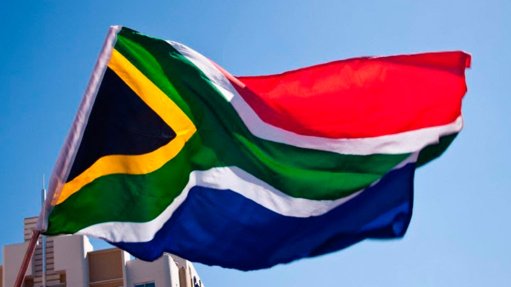Climate resilience: optimising strategies against uncertainty
Climate resilience in Africa can only be optimised if other forms of social protection work in concert. This means you may not achieve success, entirely, with the scaffold of climate resilience when all other scaffolds of income and social protection are broken.
An average Dane need not worry about entering into a risky business venture because Danes have very good social protection. People who live in a poor township like Soweto, in Johannesburg, or Kabira, in the Kenyan capital of Nairobi, do not enjoy this advantage and they also do not have access to the resources and opportunities that an average Dane possesses, given the variety of support a Danish person enjoys.
Assuming a Dane fails in his or her venture, that setback does not spell personal ruin. We would not be wrong in expecting that, by adulthood, almost every Dane would have attained certain capabilities, including high degrees of literacy; a good education, as education is provided free by the State; good health; affordable transport; and unemployment support.
Danes can use these forms of social protection to secure other capabilities and make other choices in life.
It is also true that in Denmark not every Dane is equal: in some poor neighbourhoods, individuals from certain social backgrounds, race and religious identities can also find themselves excluded, even in that highly egalitarian society. The problem of exclusion on grounds of neighbourhood effects, race and gender have been studied by economists such as Raj Chetty and others.
The neighbourhood effect is simple: assumptions about ‘bad’ neighbourhoods tend to stigmatise individuals seeking career opportunities because those who live outside these neighbourhoods are primed by negative narratives about the state and quality of education in these areas. This is the main reason one needs policies to address the effects of bias (overt or subconscious) so that individuals who come from these neighborhoods have better chances of upward mobility and for their talent to be acknowledged.
These examples illustrate the fact that the experience of risk and the shock of uncertainty vary, depending on social context and one’s social status.
Dealing with uncertainty is not an exercise in predicting its occurrence, especially extreme events, as we cannot prepare for every eventuality. But we can prepare by ensuring that we have the means to weather the storm as best we can.
Households in Cuba have a better chance of withstanding the effects of hurricanes than an average Haitian household – and the difference is to be seen every time either of these countries is hit by a natural disaster. Cuba is not a rich country, but its society has developed institutional and social mechanisms to withstand extreme events. Cubans are poor (compared with the average American, for example) but do not suffer the persistence of a poverty trap. Even though every Cuban may not enjoy full political freedom, Cuban society and the country’s government have developed systems of social protection that work. Cuba’s primary healthcare system, for instance, is one of the best in the world.
These phenomena of differential effects and treatment of the problem of vulnerability in the face of uncertainty bring us closer to the approach of recognising the value of the capabilities approach espoused by Amartya Sen and Martha Nussbaum. In fact, they are the foundation stone of the new foundation I am busy establishing, the African Climate Foundation.
The capabilities approach places emphasis on the capabilities that individuals can acquire in the course of their lifetime so that they are secure in their ability to pursue ends that are meaningful to themselves – Sen and Nussbaum essentially argue that means (such as material things, which are ultimately measured in the form of income indicators) are insufficient indicators of wellbeing.
Sen argues that income is a means, but not the end. Individuals ought to be able to convert income into capabilities by having the freedom and choice to do different things in their lifetime – such as learning to cook, holding political office or participating in a business venture.
A society that is structured to counterbalance relative income inequality with the need for equality in opportunity is best able to do so if it has good social programmes in place. For example, countries that have strong healthcare, education and essential services programmes bolster relative income disparities with improved access to basic services that individuals and households from low-income categories can benefit from immensely. The lack of basic services is not only a form of deprivation, but also corrodes household income accumulation. Households that have to commute long distances on subsidised, yet unreliable, public transport are forced to rely on more expensive means of getting to work.
Poor or overcrowded healthcare facilities force households to seek more expensive options. Publicly funded social protection that is poorly delivered, nonexistent or dysfunctional may end up contributing to the poverty trap and increasing the vulnerability of individuals and households to exogenous shocks. A suite of social protection measures enables households to convert incomes into other capabilities that secure better education, health and the potential for longevity, as well as other types of livelihood or career opportunities.
The framework to think through climate resilient models is to understand the social protection landscape already in place, or the lack thereof, that will require bolstering with other partners to give climate resilience strategies increased chances of success.
Climate resilience models should enhance existing social protection measures or at least build on them. Income measures are at the one end of the spectrum as the capabilities model also allows us to take a wider view as we conceive strategies to build stronger, resilient households and communities.
Article Enquiry
Email Article
Save Article
Feedback
To advertise email advertising@creamermedia.co.za or click here
Comments
Press Office
Announcements
What's On
Subscribe to improve your user experience...
Option 1 (equivalent of R125 a month):
Receive a weekly copy of Creamer Media's Engineering News & Mining Weekly magazine
(print copy for those in South Africa and e-magazine for those outside of South Africa)
Receive daily email newsletters
Access to full search results
Access archive of magazine back copies
Access to Projects in Progress
Access to ONE Research Report of your choice in PDF format
Option 2 (equivalent of R375 a month):
All benefits from Option 1
PLUS
Access to Creamer Media's Research Channel Africa for ALL Research Reports, in PDF format, on various industrial and mining sectors
including Electricity; Water; Energy Transition; Hydrogen; Roads, Rail and Ports; Coal; Gold; Platinum; Battery Metals; etc.
Already a subscriber?
Forgotten your password?
Receive weekly copy of Creamer Media's Engineering News & Mining Weekly magazine (print copy for those in South Africa and e-magazine for those outside of South Africa)
➕
Recieve daily email newsletters
➕
Access to full search results
➕
Access archive of magazine back copies
➕
Access to Projects in Progress
➕
Access to ONE Research Report of your choice in PDF format
RESEARCH CHANNEL AFRICA
R4500 (equivalent of R375 a month)
SUBSCRIBEAll benefits from Option 1
➕
Access to Creamer Media's Research Channel Africa for ALL Research Reports on various industrial and mining sectors, in PDF format, including on:
Electricity
➕
Water
➕
Energy Transition
➕
Hydrogen
➕
Roads, Rail and Ports
➕
Coal
➕
Gold
➕
Platinum
➕
Battery Metals
➕
etc.
Receive all benefits from Option 1 or Option 2 delivered to numerous people at your company
➕
Multiple User names and Passwords for simultaneous log-ins
➕
Intranet integration access to all in your organisation


















